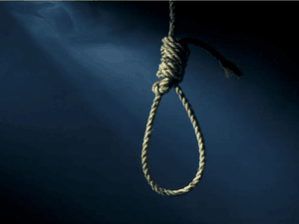
The alarming rise in suicide rates among young people in India has emerged as a pressing concern. As per experts, India's youth suicide rate is significantly higher than in other countries. This revelation was made on World Suicide Prevention Day, observed annually on September 10th, a day dedicated to raising awareness and combating the stigma associated with suicide. The theme for the year was Changing the Narrative on Suicide, emphasizing the need to shift the discourse around suicide from blame and shame to understanding and empathy.
Suicide is the fourth leading cause of death among late adolescents (15–19 years) in India. Data from the National Crime Records Bureau (NCRB) indicates that over 40% of all suicide cases involve young adults under the age of 30. Prof Nand Kumar from the Department of Psychiatry at AIIMS highlighted the gravity of the situation, stating that the number of young people dying by suicide in India is almost double the global average, with approximately 160 young individuals taking their lives daily. The reasons behind this grim statistic are manifold. Stressful family environments, unstable emotional health, substance use, failed relationships, poor bonding among friends, and loneliness are some of the common factors that precipitate the idea of suicide. In 2022 alone, the NCRB data showed that 1.71 lakh people died by suicide, underscoring the urgency of addressing this public health crisis.
Dr. Shyam Bhat, Psychiatrist and Chairperson, LiveLoveLaugh, echoed this sentiment, stating that suicide, a leading cause of death among individuals aged 15 to 39, is one of the most pressing public health crises globally and in India. Dr. Jyoti Kapoor, Founder-Director and Senior Psychiatrist, Manasthali, highlighted the government's initiatives like the National Mental Health Programme and the Kiran Helpline to address the mental health crisis and prevent suicide. However, she stressed the need for greater awareness, access to care, and addressing underlying socio-economic issues to reduce suicide rates. The experts emphasized the need for collective societal participation to prevent suicides and help those struggling with emotional challenges access support, free from stigma and shame. They advocated for a comprehensive suicide prevention strategy that goes beyond screening for individuals at risk of suicide. The policy, they suggested, should focus on enhancing social and emotional connectivity, physical and emotional activity, and mindfulness.

The situation in India mirrors a global trend. In South Korea, for instance, a politician linked a rise in male suicides to the increasingly dominant role of women in society, highlighting the complex socio-cultural factors that contribute to suicide rates. In the United States, Native American communities, despite their strong family bonds, face the highest suicide rates, with limited mental health resources available to them. The COVID-19 pandemic has further exacerbated mental health issues worldwide, with increased feelings of functional impairment, boredom, stigma, worry, phobia, frustration, and anger. Fear, uncertainty, and the resulting social disconnection have led to increased psychological distress, contributing to higher suicide rates.
In response to this global crisis, mental health professionals are leveraging technology and peer support to meet the growing demand for mental health care. Focused brief group therapy (FBGT) is one such strategy that empowers participants to practice skills in a safe environment, thereby reducing the risk of suicide. Rising suicide rates among young people in India and globally underscore the urgent need for comprehensive, multi-faceted strategies to address this public health crisis. These strategies must encompass improved mental health support, socio-economic interventions, and a collective societal effort to change the narrative around suicide and mental health. The fight against suicide is not just a battle for mental health professionals but a collective responsibility that requires the participation of all sectors of society.

















